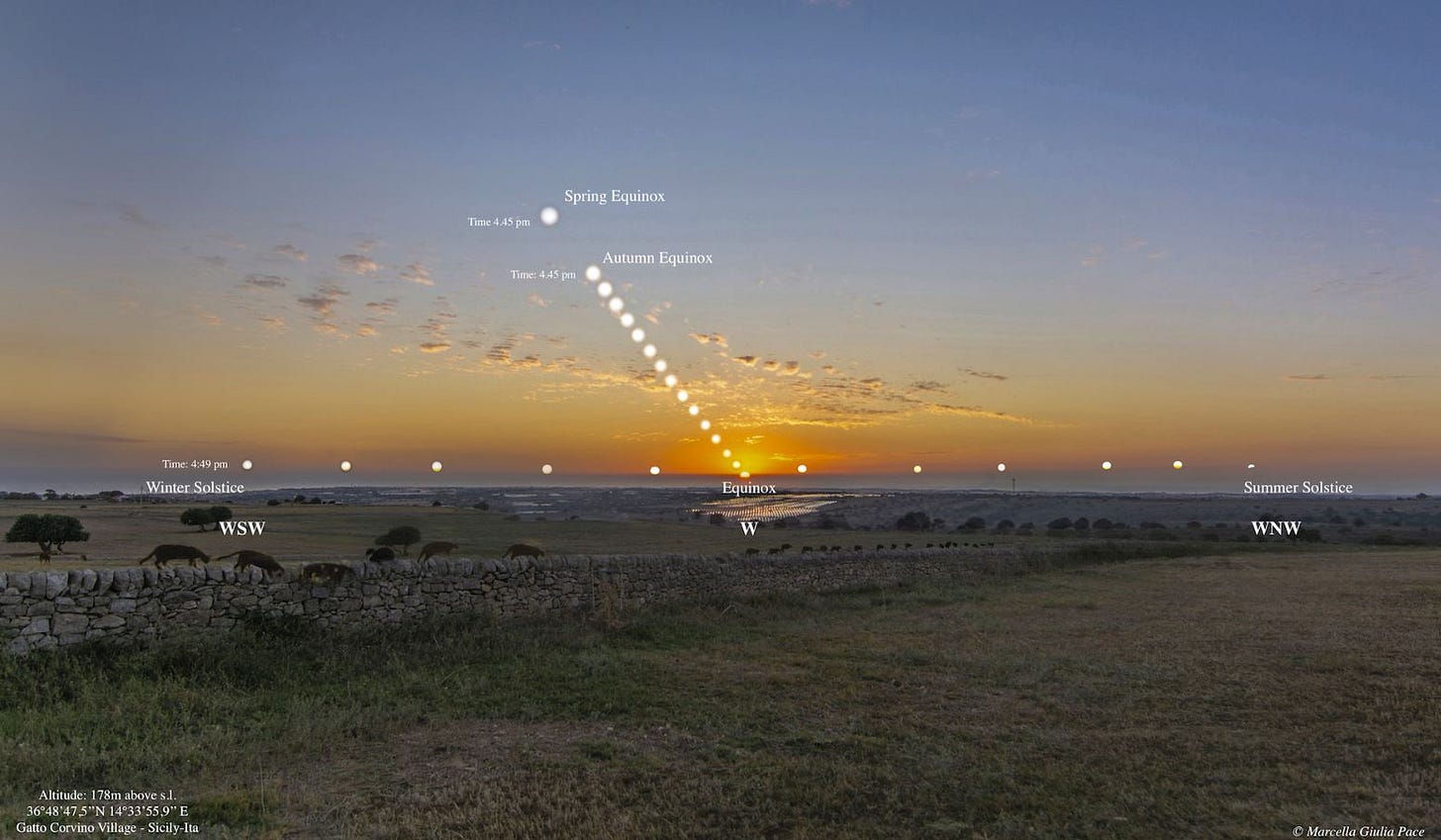Ever watched the sunset and noticed how the sun seems to touch different points along the horizon throughout the year? The Summer (June 21) and Winter (21st Dec) Solstices are key to understanding the sun's path across the sky, the changing lengths of day and night, and what it heralds for the seasons.
The word ‘solstice’ comes from the Latin words sol (sun) and sistere (to stand still), as it marks when the sun reaches its northernmost position, which is the Tropic of Cancer, appears to hesitate for a while, before reversing towards the south, or the Tropic of Capricorn. These two latitudes, Cancer and Capricorn, represent the apparent journey of the sun as seen when the Earth wobbles on its faulty axis.
World over, cultures celebrate the two solstices and the two equinoxes. Some have even built monuments to mark the journey of the sun: Stonehenge (England), Machu Picchu (Peru), Chichen Itza (Mexico), Chaco Canyon (New Mexico, USA), The Great Sphinx and Pyramid of Khafre (Egypt), Newgrange (Ireland), Ring of Brodgar (Scotland), Chankillo (Peru), among others. For ancient civilizations, these sites bore great significance, not just as markers of time and seasons — serving as clocks, compasses, and calendars — but also as cultural symbols. [Read more about the solstices at some of these ancient sites.]
Today, we no longer need to mark the journey of the sun to determine when the seasons will change; we’ve found so many ways to measure them. We also know the solstices are caused by the tilt of the Earth's axis. The best time to understand how we learned of the Earth’s tilted axis is by watching sunrises or sunsets throughout the year. After all, sunrises and sunsets are not just one of Nature’s finest daily spectacles, but they also mark the sun's apparent movement along the horizon.
The positions of the summer and winter solstices, and the spring and autumn equinoxes, as recorded at the Galto Corvino village in Sicily, Italy. If you have a view of the horizon and can see the sun rise or set, you can also chart the sun’s journey.
On the summer solstice, June 21, if you’re in the northern hemisphere facing east, the sun sets to the far right of the horizon. On the winter solstice, December 21, the sun sets to the far left of the horizon. If you have a view of the horizon, you could mark the points where the sun sets on these two days to chart the journey of the sun through the year. The equinoxes (March 21 and September 22) mark the midpoint of the sun’s conduit.
Moreover, the summer solstice marks the longest day and the shortest night in the northern hemisphere. Whereas, the winter solstice marks the shortest day and the longest night, before the days begin to lengthen again.
As you can imagine, these cycles and patterns are reversed in the southern hemisphere.
Such records of the apparent movement of the sun, and our knowledge that the Earth was a sphere, helped the ancient empirically deduce that the Earth’s axis is atilt! As we know, if the Earth's axis were perpendicular to its orbit, we'd have no seasonal variations — the Sun would shine with the same intensity all year round. It is the slight tilt that causes us to enjoy three or four seasons throughout the year.
While most of us learned this in school, I don’t think we actually appreciate what this means till we watch the changing position of the sun when it touches the eastern or western horizon. School geography also missed one little detail: the dates we memorized for the solstices and equinoxes change every 11,000 years. Thankfully, as none of us will live that long, we don’t need to recalibrate just yet.
So, if you’ve missed the sunrise today, it isn’t too late to catch the sunset. Where I am, it is overcast today, and there’s a slim chance of seeing the sunset. But if it’s bright and sunny where you are, take some time to watch the sunset. One doesn’t need to be at sacred places like Stonehenge or Chankillo, to mark the change of seasons — a clear view of the horizon and a glorious sunset are all we need to understand why the ancients worshipped the fiery Sun. And if you wait a little longer, you can also watch the full moon rise!






